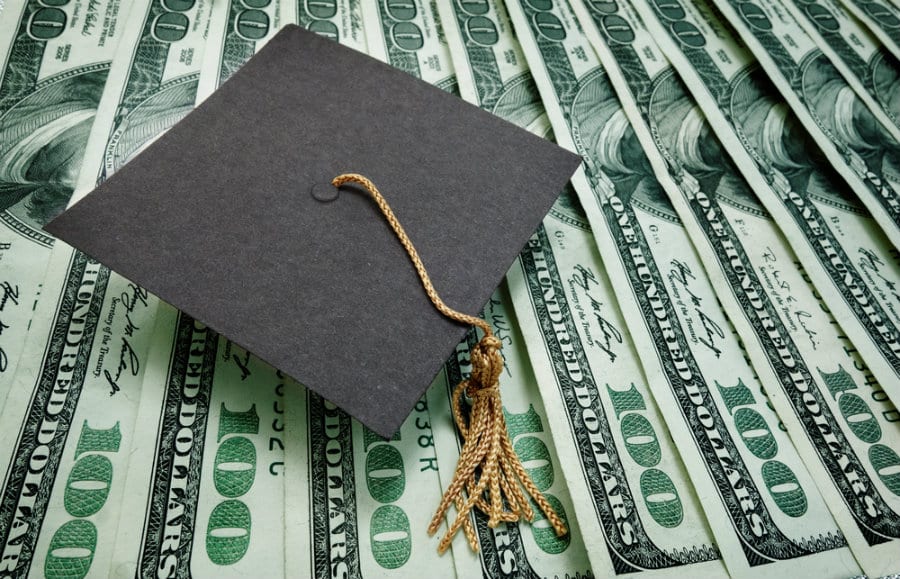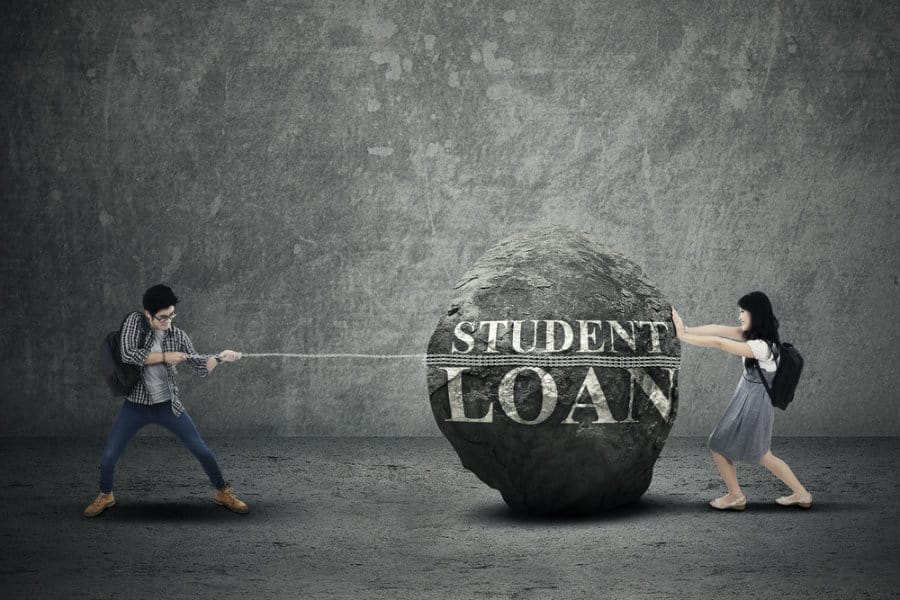Many millennials are graduating today to find fewer job prospects than graduates from previous generations. I am one of those millennials.
I graduated in 2014 with a master’s degree and I have $55,000 in student loan debt. Even though I have a master’s degree, so far it hasn’t paid off because my full-time job doesn’t even require a degree — it would seem, at least at present, that I invested all that money in an education for a job that doesn’t even use it.
It’s been difficult to get ahead financially because nearly a quarter of my income goes to student loan payments. I’ve often wondered what my life would be like if I wasn’t saddled with all of this debt.
I’m not alone

My situation isn’t unique. Nearly 27 percent of Credit Sesame’s 7 million members also have student loans, with an average balance of $33,720. Based on Credit Sesame members, the average millennial between the ages of 25 and 34 only earns $32,871 per year, so it’s no surprise that many young people find it hard to get ahead.
Without as much disposable income, it’s hard to purchase big-ticket items like cars and homes.
[You May Also Like: What the Real Cost of a Millennial-Friendly ‘Farm House’?]
If people didn’t have such large chunks of their pay go straight to student loan debt, would they actually spend more money on these things? I examined data from Credit Sesame members and compared those who have student debt with those who don’t, and analyzed what their financial situations were like.
Credit card debt for those with and without student loans
– Average credit card balance for people with student loans: $3,472
– Average credit card balance for people without student loans: $2,916
Difference: $556
Key finding: Student loan borrowers have more credit card debt than those without student loans.
Auto loans for those with and without student loans
– Average car loan for people with student loans: $9,167
– Average car loan for people without student loans: $7,435
Difference: $1,732
Key finding: Student loan borrowers have more auto loans than those without student loans.
Mortgage debt for those with and without student loans
– Average mortgage and home equity balance for people with student loans: $32,530
– Average mortgage and home equity balance for people without student loans: $36,976
Difference: $4,446
Key finding: Student loan borrowers have less mortgage debt than those without student loans.
Credit scores for those with and without student loans
– People with student loans: 609
– People without student loans: 617
Difference: 8
Key finding: Student loan borrowers have lower credit scores than those who have no student loans.
How debt affects credit scores for people with student loans

People who have student loans generally have lower credit scores and two main factors could cause this.
[Related: How student loans affect credit score]
1. Their credit cards may be overused. For credit cards, a big factor is the credit utilization rate — how high your credit card balances are compared to how much you can charge.
Credit Sesame members age 25 to 34 have a credit card utilization rate of 21 percent, meaning they’ve charged up just over a fifth of their total credit line. Consumers with top credit scores use no more than 10 percent of their available credit, both cumulatively and on individual cards.
2. Younger consumers may not appreciate the importance of payment history. For all types of debt, a big factor taken into account by credit scoring agencies is whether or not you make your payments on time, every time. Even just one late payment can damage your credit score.
Here is payment history data from my research:
– 51 percent of Credit Sesame users age 25 to 34 are current on their accounts and have never had a late payment
– 10 percent are now current but have been late in the past
– 29 percent of members are now late
– 10 percent are now in collections
[Related: Credit Sesame Report Shows Hawaiians Have Only 4% of Accounts in Collections — Why?]
Consumers who have one or more late payments on their records will suffer points from their credit score.
The effects of student loans on debt load

In general, having student loans is highly correlated to the prevalence of other debt. Inability to pay off purchases could be due to having less money left over after paying for student loans.
Not surprisingly, having student loans also means that you’re less likely to be able to afford your own home. This is partly due to the debt-to-income ratio. The debt-to-income ratio is the amount of money you spend each month on required debt payments (fixed amount payments, like car loans, and minimum payments, like credit cards).
Mortgage lenders require this ratio to be around 40 percent or lower, including the desired mortgage. (The exact number varies by lender.) If you’ve got low income and student loans, a big percentage of that ratio is already eaten up.
[Related: Understand Lender Credit Lingo & Jump to a Higher Credit Category]
For the time being, at least, it looks like the burden of having student loans means that it’s more likely you’ll go into debt for smaller purchases and be unable to afford major expenses like a home. Now, let’s keep up with our payments and keep searching for a higher paying job!
Want some inspiration to tackle your loans? Check out how another Credit Sesame contributor, Zina Kumok, paid off her loans in three years!
| Users | Has student loans? | Average score | Average total current balances | Average student loan balances | Average non-student loan balances | Average auto loan and lease balances | Average credit card balances | Average charge account balances | Average mortgage and home equity balances | Average collection account balances |
|---|---|---|---|---|---|---|---|---|---|---|
| 220,555 | Yes | 608.9 | $83,366 | $33,720 | $47,875 | $9,167 | $3,471 | $741 | $32,530 | $1,771 |
| 611,073 | No | 616.6 | $52,175 | $0 | $50,126 | $7,435 | $2,916 | $558 | $36,976 | $2,049 |





















